Basil is one of the most cherished herbs in kitchens and gardens worldwide. Known for its vibrant, aromatic leaves, this herb enhances a variety of dishes, from pasta sauces to refreshing drinks and fragrant pestos. To enjoy a steady supply of lush, flavorful basil leaves throughout the growing season, proper harvesting and cutting techniques are essential.
Cutting basil isn’t just about plucking a few leaves when needed — strategic pruning and harvesting promote bushier growth, extend the plant’s lifespan, and prevent it from flowering too early. In this article, you’ll learn how to cut a basil plant the right way, when to do it, what tools to use, and helpful tips for storing those fragrant leaves after harvest.
Why Proper Cutting Matters
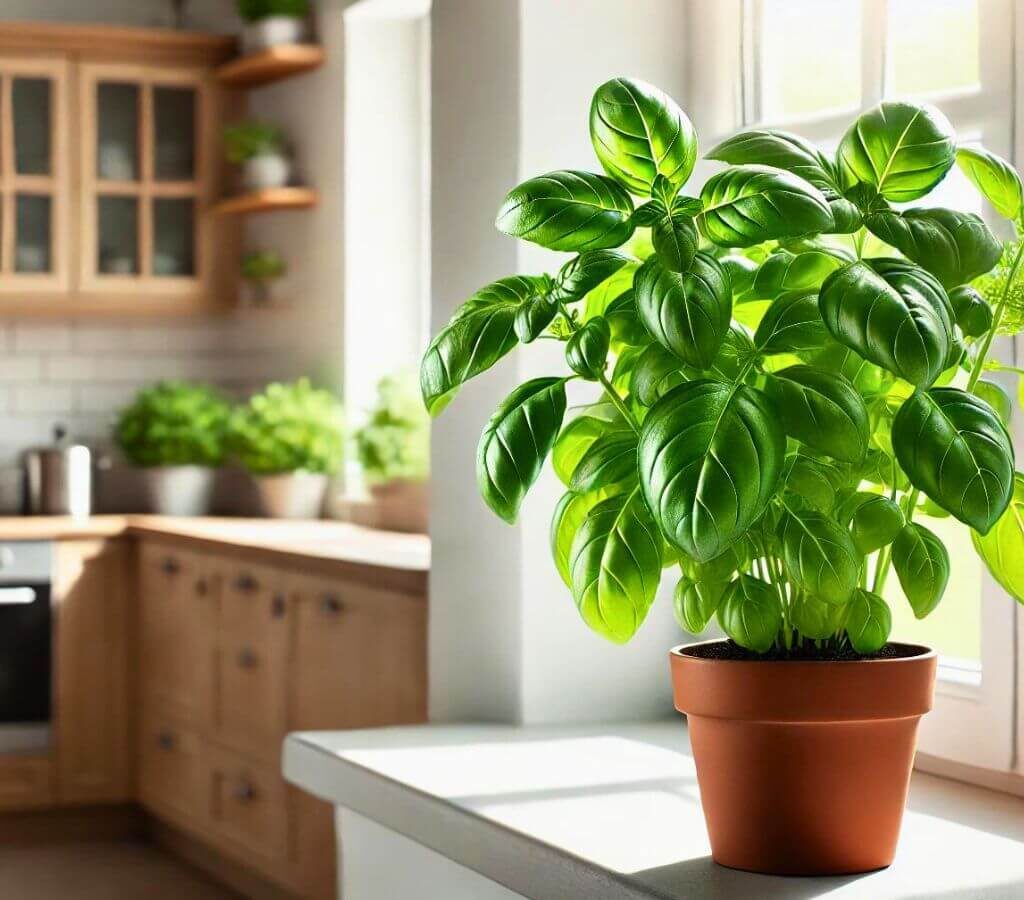
Before diving into how to cut basil, it’s important to understand why it matters:
- Encourages Bushier Growth: Regular pruning stimulates new shoots, making your basil plant fuller and more productive.
- Delays Flowering: Cutting helps prevent early flowering, which can make the leaves bitter and reduce the plant’s lifespan.
- Promotes Continuous Harvest: Proper cutting ensures a steady supply of fresh, tender leaves throughout the season.
- Keeps the Plant Healthy: Removing old or damaged leaves and controlling growth prevents overcrowding and reduces the risk of disease.
When to Cut a Basil Plant
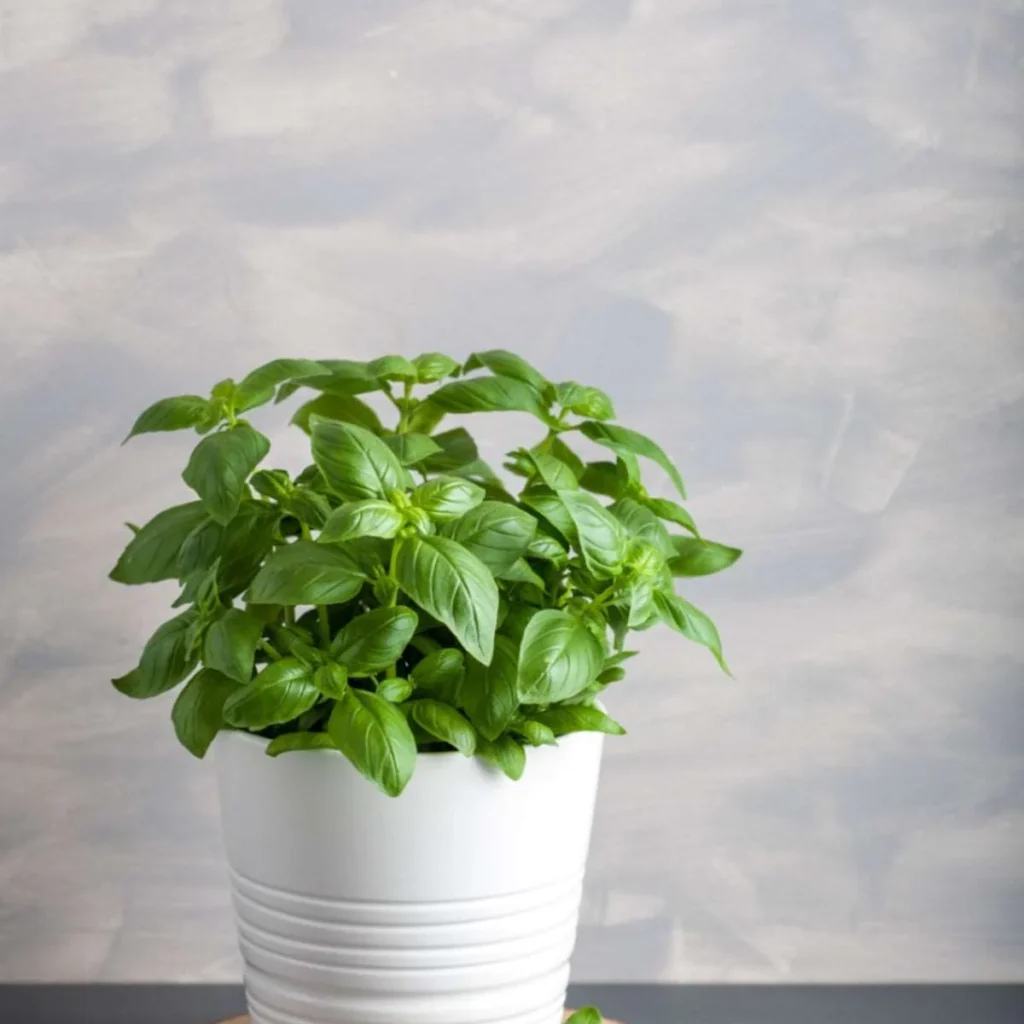
Timing your cuts is key to maintaining a healthy, productive basil plant:
- First Harvest: Begin harvesting when the plant reaches 6 to 8 inches tall and has at least 6–8 leaves per stem. Avoid cutting too early, as the plant needs enough foliage to photosynthesize and grow.
- Throughout the Growing Season: Cut basil every 1 to 2 weeks during the growing season. Frequent cutting encourages branching and produces new growth.
- Before Flowering: Always cut basil before it starts to flower. Once flowers appear, the plant redirects energy from leaf production to seed formation, and the leaves can turn bitter.
If flowers do begin to form, pinch them off immediately to keep your basil focused on growing fresh, aromatic leaves.
Tools You’ll Need
While basil is tender enough to pinch by hand, using clean, sharp tools makes for cleaner cuts and reduces the risk of plant disease. Here’s what you might use:
- Sharp Garden Scissors or Shears: For precision and clean cuts.
- Clean Hands: If pinching by hand, ensure your hands are clean to prevent contamination.
- A Clean Bowl or Basket: To collect the harvested leaves.
Always clean your tools before and after cutting to prevent the spread of disease between plants.
How to Cut a Basil Plant for Fresh Leaves: Step-by-Step
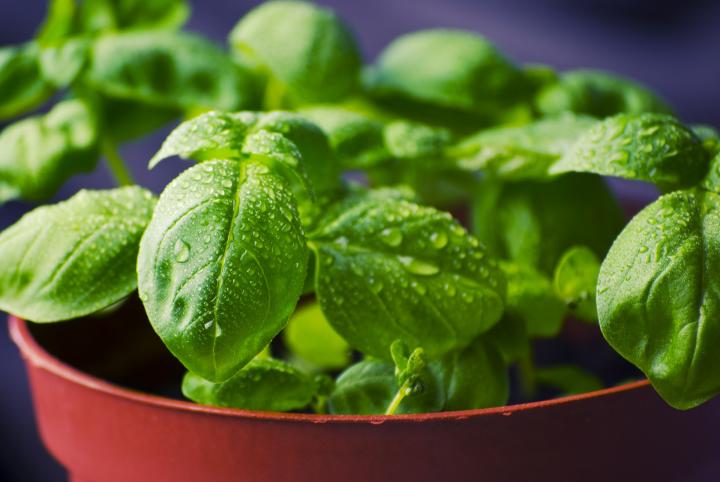
Step 1: Identify the Right Spot
Locate a stem that’s at least 6 inches long with multiple pairs of leaves. Look for a pair of leaves where two small leaf buds (nodes) are growing in the leaf axils (where the leaf meets the stem). These buds are where new branches will form after cutting.
Step 2: Make the Cut
Using your scissors, shears, or fingers:
- Cut just above the leaf node, leaving the buds intact. Make sure to cut the stem about 1/4 inch above the node.
- Never cut the entire stem down to the base, as this will limit new growth.
Cutting above the leaf node encourages two new stems to sprout, doubling the potential for future harvests.
Step 3: Remove Larger, Older Leaves
As you harvest, take the opportunity to remove any larger, tough, or yellowing leaves, especially near the base of the plant. These leaves are less flavorful and can sap energy from younger, tender growth at the top.
Step 4: Avoid Cutting More Than One-Third
When harvesting, never remove more than one-third of the plant’s foliage at a time. Overharvesting can weaken the plant and reduce its ability to photosynthesize and regrow.
If your basil plant is very young or stressed, limit your cuts to a few sprigs at a time.
Tips for Cutting Basil the Right Way
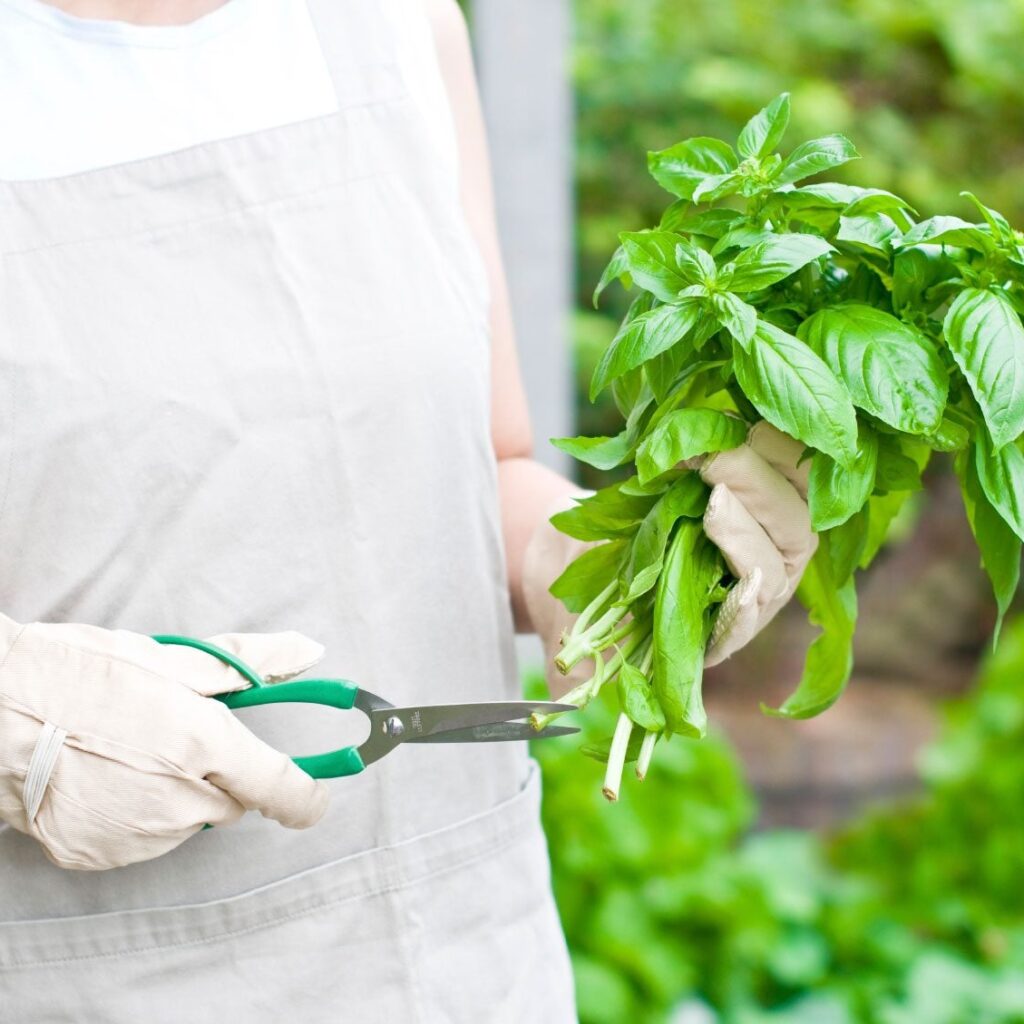
- Pinch Regularly: Regularly pinching or cutting your basil encourages it to grow outward rather than upward, creating a fuller plant.
- Harvest in the Morning: For the best flavor and aroma, cut basil early in the morning after the dew has dried but before the sun is too strong.
- Cut Before Flowering: Monitor for flower buds and cut the plant before flowering begins.
- Water Before Cutting: Well-hydrated plants recover from pruning more quickly.
After the Cut: How to Store Fresh Basil Leaves
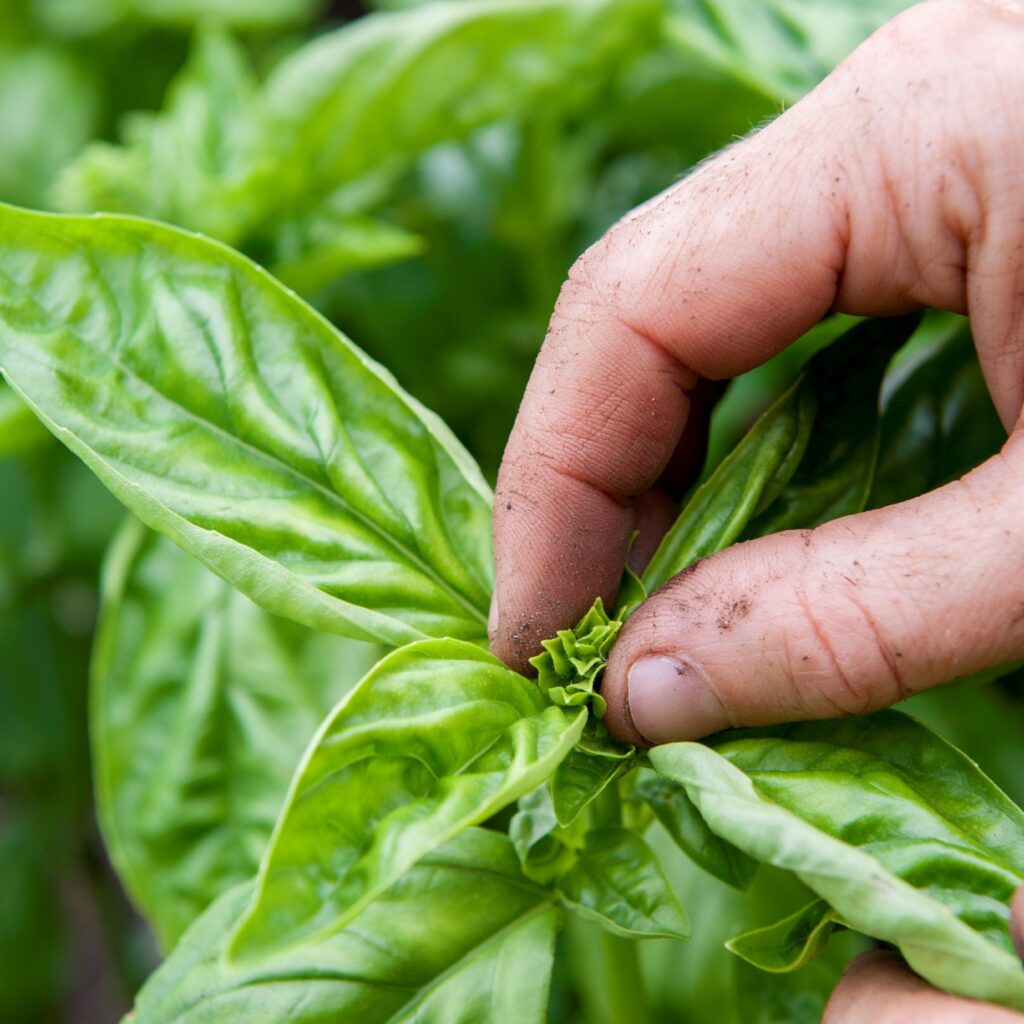
Freshly cut basil can be stored in several ways:
1. In Water
- Place stems in a jar of water, like a bouquet.
- Cover loosely with a plastic bag and keep on the kitchen counter.
- Change the water daily.
This method keeps basil fresh for up to a week.
2. Refrigeration
- Wrap basil leaves in a slightly damp paper towel.
- Place in a perforated plastic bag in the refrigerator’s crisper drawer.
- Use within 3–4 days.
3. Freezing
- Blanch leaves quickly in boiling water for a few seconds.
- Transfer to an ice bath, pat dry, and freeze in a single layer before storing in airtight containers.
- Frozen basil works well in cooked dishes like soups and sauces.
Common Mistakes to Avoid
When cutting basil, avoid these frequent pitfalls:
- Overharvesting: Removing too many leaves at once weakens the plant.
- Letting It Flower: Flowering redirects the plant’s energy and reduces leaf quality.
- Not Pruning Regularly: Infrequent cutting leads to tall, leggy plants with sparse leaves.
- Cutting Too Low: Avoid cutting stems too close to the base without leaving at least one pair of leaves.
Conclusion
Knowing how to cut a basil plant for fresh, aromatic leaves is an essential skill for any home gardener or herb enthusiast. Proper cutting techniques not only provide you with a steady supply of flavorful basil but also keep your plants healthy, bushy, and productive. By harvesting regularly, cutting above leaf nodes, and storing leaves properly, you can enjoy the rich taste and intoxicating fragrance of fresh basil all season long.
Whether you grow basil on your windowsill, balcony, or backyard garden, a little thoughtful care and cutting will reward you with lush greenery and endless culinary possibilities.




Leave A Comment